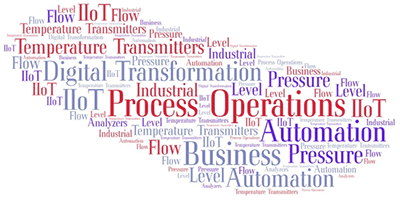




The Temperature Transmitters Selection Guide includes selection criteria, supplier profiles, and strategies to help process manufacturing organizations select the correct temperature transmitters and supplier for their unique operations and business requirements.
Wireless technology will allow users to install field devices like temperature transmitters in measurement points that previously were not feasible due to the high cost of wiring. The ease and cost-effectiveness of adding wireless measurement points represent opportunities for plant operators to improve energy efficiency, safety, and compliance with regulatory requirements.
 The WirelessHART standard helps users, many of whom have been noncommittal or skeptical toward wireless, more easily deploy wireless field devices or connect existing stranded assets (the majority of which are HART-compatible) to PAM systems. With only 20-30 percent of field devices deployed in critical control applications, wireless adoption for less-critical, asset monitoring, and similar applications will thrive as the acceptance of wireless standards becomes more widespread.
The WirelessHART standard helps users, many of whom have been noncommittal or skeptical toward wireless, more easily deploy wireless field devices or connect existing stranded assets (the majority of which are HART-compatible) to PAM systems. With only 20-30 percent of field devices deployed in critical control applications, wireless adoption for less-critical, asset monitoring, and similar applications will thrive as the acceptance of wireless standards becomes more widespread.
Temperature transmitter suppliers should be able to recommend the best sensor to match the user’s application. In general, an RTD will give a more accurate, stable temperature measurement than a thermocouple (T/C), provided the somewhat more fragile RTD can withstand the environment. An RTD or T/C output will change due to temperature cycling, temperature swings, corrosion, lead wire degradation, moisture, and contamination. Where possible, use 4-wire RTDs, and specify a temperature transmitter that is able to accept a "true" 4-wire RTD input. The advantage is that the fourth wire in a RTD circuit effectively cancels out errors due to resistance imbalances between the leads. Every ohm of imbalance in an RTD’s lead wires results in as much as a
2.5°C measurement error.
Forward-looking suppliers are investing to bring Industrial IoT to the field device level in the temperature transmitter market. Various Industrial IoT capabilities, such as remote monitoring and remote services, can help establish a more collaborative relationship between end users and suppliers. Industrial IoT solutions are now available for horizontal integration along the value creation chain, for consistent engineering from planning to maintenance, and for vertical integration from the field to the control level. However, Industrial IoT may not be available directly for two-wire devices, due to the high electricity consumption for the transmitter. End users can leverage the expertise of suppliers to help manage plant assets across their entire lifecycle; suppliers can go beyond being just automation providers, enhance their overall project revenues, and enjoy long-term revenue streams through customer service relationships.
Suppliers need to have a well-defined strategy and offerings in place across the value chain. They need to have edge devices Industrial IoT ready, gateways to log and capture data from multiple sources, and cloud to store and analyze data and to deliver meaningful and actionable results to customers.
Users need to focus on leveraging smart field systems to create value in process industries. Smart sensors, as an enabler for Industrial IoT, will play an increasingly important role in process automation in the future. ARC also recommends that users work closely with temperature transmitter suppliers and other stakeholders to better understand how to measure ROI and share best practices for intelligent device management. Users should always seek opportunities to leverage industry standards such as ISA 108 (intelligent device management) to improve their own plants’ operational performance and help promote application of smart field systems and intelligent device management in their respective industries.
For more information or to purchase the FIre and Gas Systems Selection Guide, please contact us.
Learn more about ARC's Technology Supplier Evaluation and Selection Guides
Learn more about ARC Strategic Services at Advisory Services for Industry Leaders




